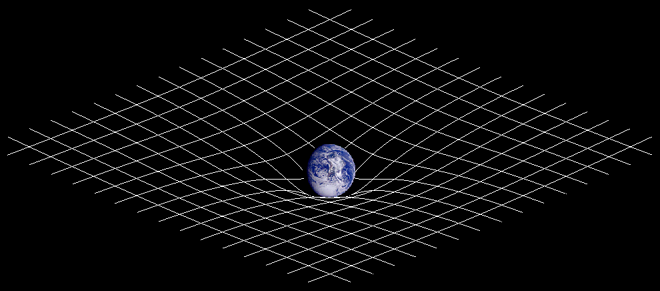Anyone noticed the flurry of theoretically impossible discoveries scientists have recently made? Science seems to be increasingly uncovering the impossible is, in fact, very possible!
It’s clear to me that the sum of human knowledge is like a thimble in a sea of what we don’t know, and we’re finding more new questions than answers. However, if science can find the answers to these amazing questions, it will revolutionize everything.
Below, I’ve assembled a list of these recent new theoretically impossible discoveries, and while some impossibilities are more easily explained than others, and indeed, some are far more revolutionary than others, I think you’ll find *all of them* fascinating.
1. Three Huge Planets Share an Orbit!
Source: io9.com: Bizarre solar system crams three giant planets into fraction of Mercury’s orbit
This discovery is the least impossible on the list, but still incredibly bizarre, especially when you consider the model of “clearing the neighborhood” planets follow right after their formation, securing an exclusive, uncontested orbit for themselves by knocking all other objects out of their path. Since the International Astronomical Union’s new 2006 definition of a planet requires that an astronomical object “clears its neighborhood” to be defined as a planet, this discovery raises serious questions about the IAU’s definition.
The Kepler spacecraft observed these three planets, two Neptune-like gas giants and one rocky, terrestrial planet twice the size of Earth, orbiting weirdly close to their sun, the newly-discovered Kepler-18 star which is eerily similar to our Sun. The three planets are so close together that they’re constantly pushing and pulling each other out of their natural orbits, the substantial gravitational fields of each preventing cataclysmic collisions. Since the rocky planet is even closer to its sun than the planet Mercury is to our Sun, it would be even hotter than Mercury (442 Kelvin) and not even microbial life could call it home.
But, if you imagine Earth sharing its orbit with others, getting yanked around by the gravitational pull of two gas giants, it would cause VERY WEIRD climate fluctuations.
We don’t know why these three didn’t clear “their neighborhood.” The situation they’re in isn’t supposed to be possible really.
To learn more about the Kepler spacecraft and its planet finding mission, click here.
2. The Pulsar in the Crab Nebula is Impossibly Powerful
Astrophysicists have observed the often studied pulsar (also known as a neutron star) in the center of the Crab Nebula pumping out radiation at energies far greater than current astrophysical models can explain. There’s currently no theory to give us any possible answers to why this pulsar is emitting gamma rays exceeding 100 GeV. 100 GeV! That’s 100-billion electron-volts, or 100-billion times more energetic than visible light. That’s supposed to be impossible.
3. Impossibly Large Planet Discovered
Source: Space.com: Largest Known Exoplanet Discovered
An exoplanet (from the Greek prefix exo- “external” or “outside”) is a planet outside our Solar System. In 2007, the Trans-Atlantic Exoplanet Survey coordinated out of the Lowell Observatory in Flagstaff, Arizona (the first observatory to photograph the then-unnamed Pluto in spring 1915, then the observatory where Clyde Tombaugh officially confirmed and discovered Pluto) also known as the TrES Project, discovered the largest-ever exoplanet to date. It’s a gas giant, 1,400 light-years away, nestled closely to its star in the constellation Hercules, but it’s SO giant it theoretically shouldn’t exist.
There are currently no models to explain why TrES-4b, one of the first “puffy planets” observed, is so puffy, not to mention why it exists. Data obtained from precise measurements of the starlight blocked when the planet crosses in front of its star (the transit method) indicates TrES-4b is 70% larger than Jupiter, but only 3/4 of its mass. Not only is it the largest planet ever seen (as of 2007) it’s also the least dense planet discovered; it’s roughly the density of cork! According to current models, we don’t know why it exists, the mass is so little that the upper atmosphere would be escaping in a comet-like tail! Why the entire gas giant doesn’t similarly escape into space is so baffling that the TrES Project team and shook their heads and had no other avenue than sent the problem to astrophysics theoreticians. Leading theories speculate that the planet’s inexplicable existence has to do with the intense heating given TrES-4b’s close proximity to its sun, and/or an alien greenhouse effect, with hydrogen in the atmosphere trapping the other gases inside and keeping the gas giant cohesive.
The questions themselves have revolutionized what we know is possible for exoplanets.
For more information: National Geographic: Largest Known Planet Found, Has Density of Cork
4. Did Neutrinos Break The Unbreakable Speed of Light??
Source: io9.com: Faster-than-light neutrinos could be proof of extra dimensions
This last item is by far the most impossible, as exceeding the speed of light is one of physics’ brick walls. Einstein’s theory of general relativity explains the speed of light as an immutable cosmic speed limit, and in the near-century since Einstein first presented the theory of general relativity, no one has been able to disprove it. In fact, data continues to mount supporting the theory; for example, recent measurements near the Sun taken by the Cassini spacecraft prove that Einstein’s predictions about the heavenly bodies’ (stars, planets, etc.) gravity bending space-time are true. More on that in a moment. So far, everything we observe about nature and physics, has been unfailingly consistent with Einstein’s elegant theory, and the theory of general relativity has stood the test of time like a stone lighthouse, unperturbed by the tides of history and the vicissitudes of science and its constant discoveries.
Until now (possibly). The recent neutrino speeds recorded in CERN’s OPERA neutrino experiment (CERN is the European Organization for Nuclear Research, well-known for its gigantic particle accelerator, the Large Hadron Collider) rocked particle physics last month. If the clocks prove correct, and that’s a big IF, and it’s true that neutrinos moved from CERN in Switzerland to Italy 60 nanoseconds faster than the speed of light, meaning FTL (faster than light) travel isn’t impossible, then that’s an unexplained hole in Einstein’s theory of relativity, and a big one! (Wondering what a neutrino is? Click here.) Not only would FTL travel come into play, but a pandora’s box of impossibilities would open up, everything from time travel to brain-twisty weirdalities like future you sending current you an email from the future with a faster-than-light internet (FTernet!)
It could mean evidence of a fifth or more dimensions, and thus the first observable evidence of string theory. String theory is an attempt at a “theory of everything” that would elegantly reconcile/combine Einstein’s theory of general relativity (addressing the big, cosmological, astrophysics and planetary mechanics problems) with what we’ve learned of quantum mechanics (atomic, sub-atomic, and now, sub-sub-atomic and lower, scale) in the intervening decades, the big astronomical, and small, quantum, questions answered in one string. String theory’s calculations have pointed to possible extra dimensions to explain where dark matter is, and how Earth’s gravity is so light considering the enormous mass of the planet. To answer fundamental physics problems like these, some suggest that gravity (and dark matter—watch Dr. Michio Kaku explain that dark matter may just be the gravitational pull of regular matter from a parallel dimension) are leaking into other dimensions, and they have produced compelling math to back up their ideas. Unfortunately, if string theory isn’t falsifiable, meaning it’s impossible that some observation or experiment will produce a reproducible result that conflicts (or doesn’t conflict) with the theory (because we don’t have the knowledge nor the technology to run experiments that test whether or not it works) then string theory isn’t really scientific, just pure mathematics, and it will wither on the vine. However, if CERN’s FTL neutrinos accidentally uncovered an extra dimension, it would move string theory to frontrunner while keeping general relativity intact, because the 60 nanoseconds FTL incident could be accounted for by the neutrinos cutting across a dimensional shortcut, proving Einstein’s cosmic speed limit is still impossible to get past within normal, four-dimensional space-time.
But a far more likely solution to the 60 nanosecond mystery is a weirdness with CERN’s clocks caused by the curvature of spacetime. As mentioned above, the heavenly bodies, Earth included, by virtue of their mass and gravity, curve spacetime, meaning that gravity is very slightly heavier at the CERN site near Geneva than in central Italy, and thus the clock on the beginning side of the neutrinos’ trip could be tens of nanoseconds slower than the clock at the finish line in Gran Sasso, Italy, and the clocks would have to be precisely synced to compensate. That gravity effects time is nothing unknown or new, but we don’t know whether or not the clocks on both ends were possibly out of sync, not exactly calibrated down to one nanosecond correctly. If such a clock synchronization problem is confirmed, it could shave up to 30 nanoseconds off the speedy neutrinos’ journey, reducing them to a much less-significant and much more easily explained 20 nanosecond over-FTL speed. Source: Faster-than-Light neutrinos face time trial : Nature

Source: Spacetime – Wikipedia, the free encyclopedia
Me, and lots of space fans like me, are hoping that scientists find a way to prove the FTL barrier really was broken, or discover more about the dimensions the mathematics implies. No one wants this explained away as a clock synchronization anomaly.
For more information: Discovery.com: Faster-than-light neutrino research “Almost Certainly Wrong”
New Scientist: Faster-than-light neutrinos? New answers flood in
